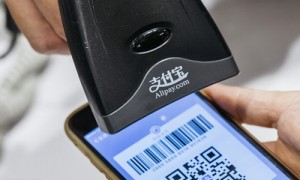2月27日,星巴克仅在中国上线新版网站,这是“数字飞轮”战略(优惠+支付+个性化+点单)的重要一步。那么这次改版在用户界面、用户体验上是否成功?这一咖啡巨头实现了它的目标吗?

Starbucks released its brand new website solely for China on February 27th, a strong step forward in its “digital flywheel” strategy (Rewards + Payment + Personalization + Ordering). How well does it fare in terms of UX/UI and fulfilling the coffee giant’s aspirations?
2月27日,星巴克仅在中国上线新版网站,这是“数字飞轮”战略(优惠+支付+个性化+点单)的重要一步。那么这次改版在用户界面、用户体验上是否成功?这一咖啡巨头实现了它的目标吗?
Starbucks’ status and positioning as a digital pioneer in the West has been acknowledged consistently for a long time. The digitalization of an already well-serviced loyalty program and willingness to invest in across-the-board innovation have helped Starbucks stay ahead in the game in the US and other countries. According to CEO Kevin Johnson, it also made digital relationships one of their most powerful demand generation levers.
星巴克作为西方数字化先锋的地位毋庸置疑。用户体验良好且忠诚度高的流程的数字化,以及对于全面创新的投资意愿让星巴克在美国及其他国家立于不败之地。首席执行官Kevin Johnson称,星巴克将数字化关系视作产生需求最强有力的杠杆之一。
On the other side of the world, breakneck speeds of development and tech adoption in China had the effect of making the chain look digitally antiquated—albeit with incredible brand power. How incredible? Enough to ignore any need for offering the convenience of mobile payments until December 2016 for WeChat and September 2017 for Alipay.
在世界的另一边,中国发展和技术革新的闪电速度让星巴克文化看起来早已过时,虽然这一文化有着惊人的巨大潜力。具体有多么惊人呢?在2016年12月接入微信支付,2017年9月接入支付宝前,它足以让顾客忽略对于便捷的移动支付的需求。
Starbucks in China: From Digital Laggard to an Innovation Lab
星巴克在中国:从落后者到创新实验室
Well, it is time to bid farewell to Starbucks’ archaic days in China. The unveiling of the “digital flywheel” strategy in 2016 and the company’s choice to use China as a digital lab is likely influenced by strong regional growth and local consumers’ openness to new concepts. Cutthroat competition between internet behemoths and the centrality of mobile devices in accessing the Internet make for savvy consumers who expect convenience and novelty.
在中国,终于到了和星巴克跟不上潮流的日子说再见的时候了。中国强劲的区域增长速度和消费者对于新概念的开放性极大程度影响了星巴克在2016年提出的“数字飞轮”战略,以及公司将中国作为数字化实验室的决定。互联网加速扩张和移动设备联网的中心化之间的竞争造就了有经验的消费者,他们对消费的方便和新颖期许已久。
It’s no surprise then that it’s China, and not the United States, which makes for an excellent testing ground for emerging digital solutions. Starbucks releasing their upgraded website in China on 27th February ahead of the US is the latest in a succession of initiatives showing the chain’s recognition of the primacy of digital experiences in China:
中国,而不是美国,为新兴的数字化战略提供了极佳的测试环境,这一点并不奇怪。星巴克在2月27号率先在中国上线其新版网站,是一系列决策的最新一步,展现了星巴克文化对于中国数字化体验的首要地位的认可。
Tmall store launch
入驻天猫
The launch of their e-commerce store on Tmall way back in December 2015 was a positive sign of Starbucks’ responsiveness to China. this is made more significant by the fact that foreign companies continue to respond tepidly to Chinese online retail.
2015年12月星巴克旗舰店入驻天猫,这是星巴克对于中国市场的积极信号。而这在外国公司对于中国线上零售不冷不热的背景下有着更深层次的意义。







